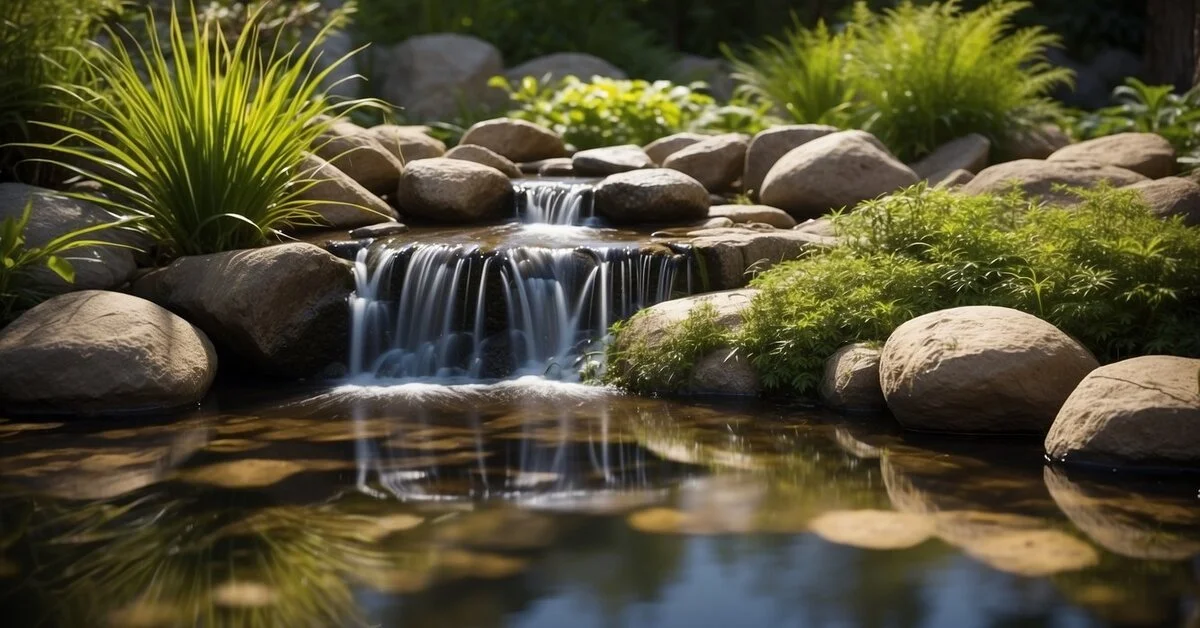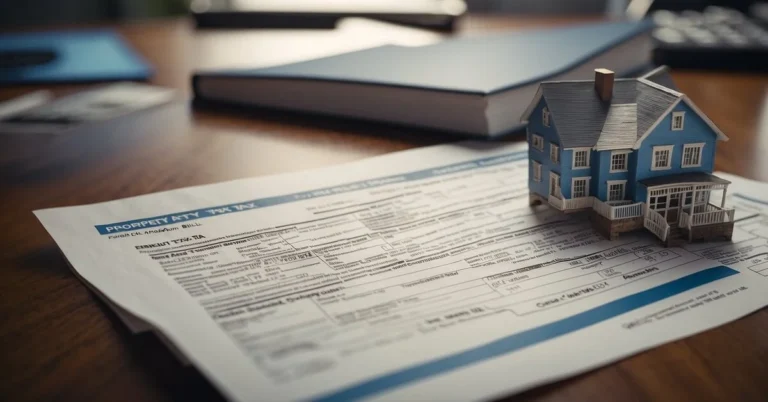Pond Ideas On A Budget
Looking for pond ideas on a budget? Creating a tranquil backyard pond doesn’t have to drain your wallet. Here’s how to dive into this project without making a splash in your savings. Whether you’re a DIY newbie or a seasoned handyperson, I’ve got some cost-effective tips and creative suggestions to help you build a serene water feature, all while keeping costs low. Let’s get started!




















Planning Your Budget Pond
Before we dive into the fun part, it’s important to remember that a stunning pond doesn’t require a fortune. With thoughtful planning and creativity, we can create a garden pond that’s both budget-friendly and beautiful.
Assessing Your Backyard Space
We should first take a careful look at our backyard space. It’s essential to consider the size of our yard and how much of that we’re willing to allocate to a pond. We’ll also want to account for existing features like trees, which could impact the pond over time (think falling leaves). This step will help us avoid overspending by ensuring our pond fits comfortably within our space and budget.
Choosing the Right Location
Selecting the ideal spot for our pond is critical. We look for an area that gets a mix of sun and shade throughout the day, which is crucial for maintaining a healthy ecosystem. The location should also be visible from our home so that we can enjoy our pond from indoors as well. Additionally, we must consider practicality — we don’t want to choose a spot that would require us to move established plants or redo significant landscaping.
Designing on a Dime
When it comes to pond design, our creativity is the most valuable tool. We opt for simpler, more natural shapes that are easier and cheaper to dig. We can visit The Pond Professor for tips on budget-friendly design options. For lining the pond, we choose materials that balance cost and durability, like a robust but affordable liner from sites like Aqua World Hub. And lastly, we can source affordable or even free rocks and plants from local communities or repurpose materials we already have to add character to our pond without breaking the bank.
DIY Pond Building and Materials
Creating a DIY pond can be a fulfilling project, and selecting the right materials doesn’t have to empty your wallet. We’re here to guide you through using repurposed materials for cost-effectiveness and to outline simple steps for constructing your pond.
Using Repurposed Materials
One of the most budget-friendly moves we can make is to repurpose materials for our pond construction. By utilizing items like a repurposed stock tank or a DIY recycled tractor tire pond, we can give new life to old items and save money. We can also scour for rocks, bricks, and gravel, which can often be found for free or at low cost. Not only does repurposing materials save us money, but it also adds a unique charm to our pond.
- Rocks and Bricks: Can be used for natural edging or building a waterfall.
- Plastic Containers: Cut and used as makeshift pond forms.
- Old Bathtubs or Sinks: Serve as preformed pond basins.
- Sealant: Essential for ensuring repurposed materials are watertight.
Simple Pond Construction Steps
When we’re building a pond, there are straightforward steps to ensure our success while keeping costs low. Let’s start with the pond liner, which is often one of the most crucial elements of our pond. We can use a flexible material like PVC or EPDM liners which are durable and relatively inexpensive. It’s important that whatever material we choose, it needs to be watertight and safe for any wildlife we plan to host.
- Choose the Location: Ensure it’s a level spot with partial sunlight.
- Outline the Pond: Use sand or spray paint to mark the shape.
- Dig the Basin: Shape the holding area, include shelves for plants.
- Lay the Liner: Position and smooth out the pond liner; it should overlap the edges.
- Secure the Edges: Place heavy rocks or bricks to keep the liner in place.
- Add Water and Features: Fill the pond and add plants, gravel, and decorative elements.
By ensuring our materials are both durable and appropriate for our pond, we set ourselves up for success without unnecessary expenses.
Water Features and Maintenance
When we’re looking to add charm to our gardens without breaking the bank, it’s important to focus on water features and maintaining them efficiently. By choosing eco-friendly options, the right pond plants, and ensuring wildlife can safely enjoy our ponds, we keep our water features both stunning and sustainable.
Eco-Friendly Water Features
For those of us passionate about the environment, eco-friendly water features like a solar-powered fountain or waterfall are attractive because they use renewable energy. Not only are they cost-effective in the long run, but they also require less maintenance. It’s a win-win: we save money on electricity, and we help the planet.
- Solar-powered pumps: ideal for circulation and aeration, especially in a small fish pond.
- Rainwater harvesting systems: reduce the reliance on tap water and benefit both pond fish and aquatic plants.
Pond Plant Choices
Selecting the right pond plants can make a world of difference in our ponds. We want a mix of emergent plants, deep water plants, and floating varieties like water hyacinths and water lettuce.
- Oxygenating plants: essential for healthy water and fish, they keep the pond balanced.
- Floating plants: help shade the pond and reduce algae growth, besides adding beauty.
Incorporating native plants: supports local wildlife and typically requires less care than non-native species.
Wildlife Attraction and Safety
A natural pond is a hub of activity for wildlife, and it can be designed to be both attractive and safe for various creatures—and for any children who may explore our garden.
- Gentle slopes: allow animals to easily access the water without getting trapped.
- Hiding spots: like rocks and logs, offer refuge for creatures from predators.
When it comes to safety for children, regular maintenance of the pond area is key. Making sure the pond’s edges are secure and perhaps installing a pond net can prevent unwanted accidents.
By following these guidelines, we create a serene and healthy water feature. With regular maintenance, our ponds will flourish and continue to be a source of joy and tranquility in our garden on a budget.
Frequently Asked Questions
How can I create a small, inexpensive pond in my backyard?
A small and affordable pond can be easily created using a preformed pond liner or a flexible liner. We can find materials to contain and line the pond—like used barrels or large plant containers—at local gardening sales or secondhand from marketplaces. By adding a few water plants and maybe a solar-powered pump, we can have a picturesque pond without the hefty price tag.
What are some creative and low-cost ideas for building a raised garden pond?
Building a raised garden pond can be a cost-effective project if we use upcycled materials like old bathtubs or large buckets. We can also create an above-ground structure with stacked stones or bricks as a supportive and aesthetic feature for our pond. With creativity, even a well-sealed wooden palette can become a charming raised pond.
What is the easiest pond to maintain?
The easiest pond to maintain is usually a small one with a balance of plants and, if feasible, fish that naturally control algae. A pond with a simple, uncluttered design, featuring easy-to-care-for plants and a basic filtration system, will require less upkeep while still providing a serene environment.
How to make a budget pond?
To make a budget pond, we can start by planning carefully to avoid unnecessary expenses. We can excavate our pond area and use a durable pond liner. Sourcing inexpensive or free rocks and plants from our local community can add aesthetics to our pond without breaking the bank. Adding a DIY fountain or waterfall using repurposed materials can also enhance the beauty of our pond economically.
How do you build a pond without digging?
To build a pond without digging, we can use above-ground containers like whisky barrels, large planters, or a self-contained preformed pond. By ensuring the container is watertight and adding a pump for circulation, we can establish a thriving pond ecosystem. This method is not only simple but also saves us the effort of excavation.
I hope you found some inspiration or useful tips in our article on ’pond ideas on a budget’! If so, I’d love to hear your thoughts and ideas in the comments below! And if you’re looking for more insightful content, don’t hesitate to explore our other articles:
- Home Wedding Ideas on a Budget: Stylish Celebrations
- Human Behavior Problems In Budgeting: Understand It!
- Budget Paleo Meals: Affordable And Delicious Meals
Your comments help us create better content for you. Happy reading!






